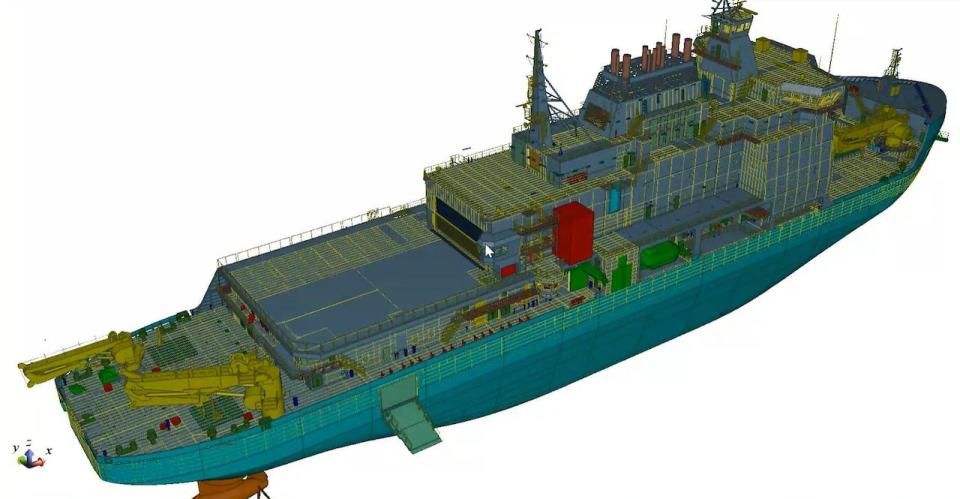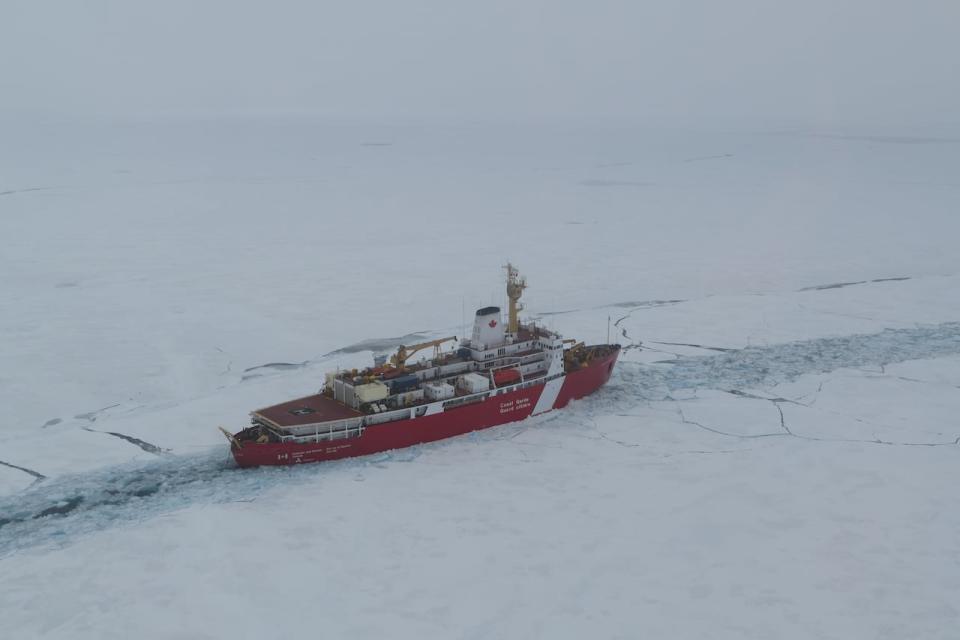Designs released for new coast guard Arctic icebreaker

The company behind one of the new heavy icebreakers for the Canadian Coast Guard says it's nearly finished with the design stage.
Vancouver-based company Seaspan Shipyards has released new 3D modelling of the vessel it's been tasked to build.
The coast guard intends to use it to open up waterways in the high Arctic for research, humanitarian efforts and search and rescue operations.
Jess Fetterman, chief engineer for the polar icebreaker program at Seaspan, said the vessel will be built to withstand temperatures as low as –50 C, meaning the coast guard will be able to operate in the Arctic year-round.
Many of its ships right now have access through the Arctic only in late spring and summer, Fetterman said.

Jess Fetterman, chief engineer of Seaspan's polar icebreaker program, says the vessel the company is building for the coast guard will have 'an added bonus of also being a full science platform' for all types of climate research. (Seaspan Shipyards)
"[Our] ship will have year-round access. So this can go all the way from the Labrador Sea up to Ellesmere Island into the actual area of North Pole."
The vessel is one of two new ships intended to replace the coast guard's current main icebreaker, the CCGS Louis S. St-Laurent, which is nearly 60 years old and set to be retired by the end of the decade.
As their name suggests, polar icebreakers cut through ice in the Arctic that can be several metres thick.
Fetterman said other lighter ships Seaspan is currently building for National Defence and the Canadian Coast Guard under the National Shipbuilding Strategy require steel 20 millimetres thick.
But for its polar icebreaker, Seaspan needs steel that's three times as thick at the ship's bow, to cut through passages.
Largest ships in the coast fleet
"We have probably 1,500 tons of these [60 millimetre-thick steel blocks] on the ship," Fetterman said.
The ships are set to be the largest in the coast guard fleet, measuring 150 metres in length, with a range of approximately 55,500 kilometres and a capacity of up to 100 crew.

Seaspan has released 3D modelling of the polar icebreaker it's building. As of June, it says it's more than 70 per cent done with the design stage. (Seaspan Shipyards)
A spokesperson for Fisheries and Oceans Canada (DFO) said the new polar icebreakers, with greater endurance, will be able to operate in a large swath of the waters throughout the Canadian Arctic Archipelago.
Many of the missions conducted by the ships will be within Canada's exclusive economic zone and any extensions to that zone that could possibly be granted as a result of Canada's 2013 submission to the United Nations Commission for the Limits of the Continental Shelf.
But, the DFO said the icebreaker's reach could extend to international waters.
Construction of the icebreaker is set to begin later this year.
No cost estimates have been released yet for the icebreaker being built by Seaspan, or for the other vessel being built by Davie Shipbuilding in Levis, Que., but the DFO said that information will be released once contracts for all phases of the project are negotiated.
In 2019, the federal government set aside $15.7 billion to rebuild the aging coast guard fleet.

CCGS Louis S. St-Laurent, shown in 2016, is the Canadian Coast Guard's current flagship. (Natural Resources Canada)


